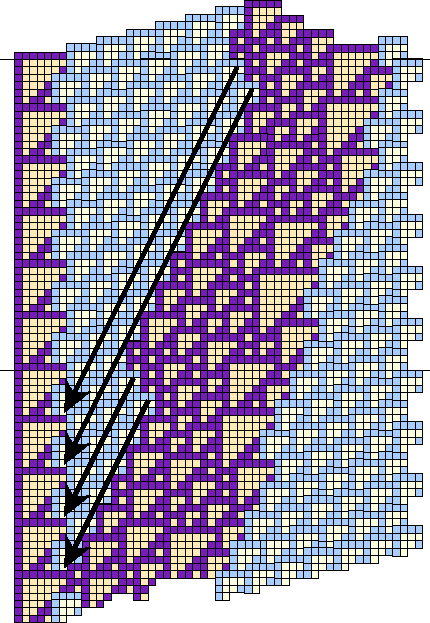 |
C gliders are static with period 7, while G gliders move left 14 every 42 generations, for a velocity of -1/3. Thus a G glider falls by one cell relative to the C chain, while coming 14 cells closer, every time it runs through its period. On the other hand, a G glider has a simple top margin consisting of three cycles of BBar margin, followed a drop of two ether tiles along an A dimer margin, there are essentially eleven positions for an oncoming G along a B line of sight, and only one B line of sight per C cell. These combinations are shown in Figure 3.37.
It is then a matter of setting up each aspect for the three C gliders, and tabulating the results, as shown in Figure 3.38. The results vary in complexity, ranging from the completely clean C3 + G![]()
![]() EBar to the two C2 collisions resulting in A + C1 + D2 + EBar. An EBar is by far the most common resultant, with most of the collisions producing varying numbers of A's; although B's arise almost as often. Sometimes a C glider will be left behind; usually a C2, but sometimes a C1, never a C3.
EBar to the two C2 collisions resulting in A + C1 + D2 + EBar. An EBar is by far the most common resultant, with most of the collisions producing varying numbers of A's; although B's arise almost as often. Sometimes a C glider will be left behind; usually a C2, but sometimes a C1, never a C3.
The BBaric periodicity of the G along the top margin, which is the part that reaches the C first, is very much in evidence; however it is not a rigorous periodicity because of the influence of the remainder of the environment.